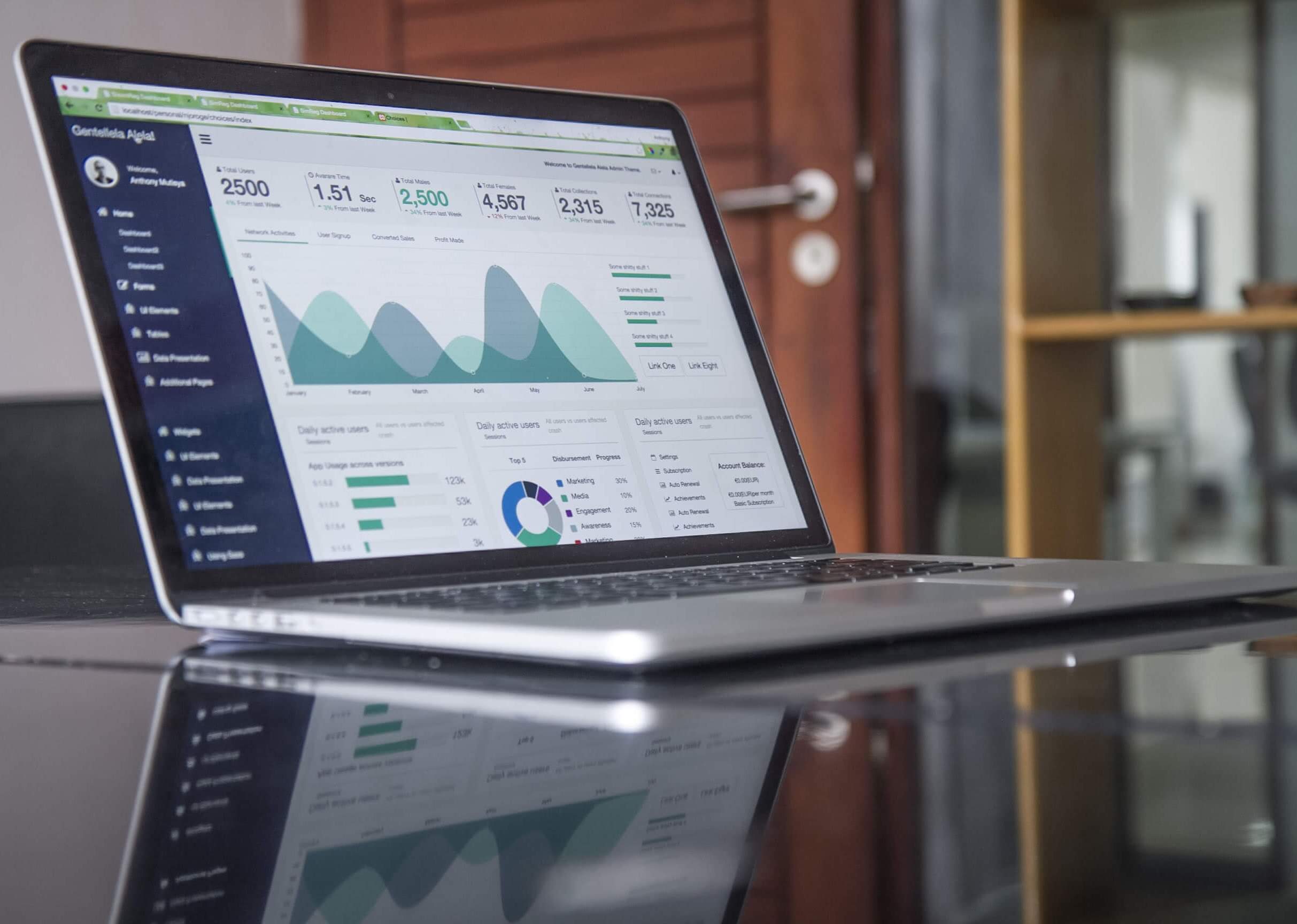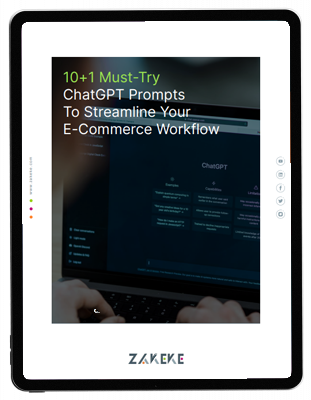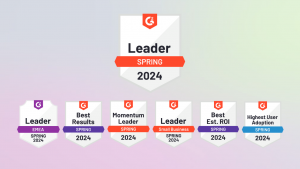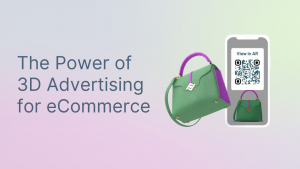The success of any eCommerce business depends on its ability to convert visitors into customers. You can significantly increase your average conversion rate and maximize sales with the right strategies and tactics.
There are many strategies for boosting your ecommerce average conversion rate. Today we want to focus our attention on product customization – Did you know that by allowing your customers to customize their products according to their needs, you can create a unique customer experience that drives them down the purchase funnel faster?
Let’s dive in to discover how to increase your average eCommerce conversion rate with customization (but not only!) and what steps you should take to get the best results from your store.
What is the average conversion rate for ecommerce?
The ecommerce conversion rate is the percentage of visitors to your online store who take a desired action, such as purchasing a product. Understanding an optimal conversion rate and how it compares to your own can help ecommerce sites by guiding them on where they need to improve and where they may currently be lacking in their ecommerce processes.
But making an action doesn’t mean only purchase a product. Let’s find out what are the other typical conversions in an ecommerce store:
- Adding products to cart;
- Adding products to a wishlist;
- Newsletter/email signup;
- Social media interactions.
If you’re wondering how to reach a good conversion rate for e-commerce, maybe you have to think about optimizing all these metrics. Let’s find out how!
Why is conversion rate optimization important?
Achieving a normal conversion rate for ecommerce is crucial for any business seeking to increase its digital sales and reach more customers:
- Having an understanding of what constitutes a “good” conversion rate can help guide businesses in their efforts to improve customer experience and increase revenue;
- Knowing your average industry benchmarks will allow you to measure how well your business is doing compared with competitors, enabling you to make adjustments where necessary;
- Tracking your ecommerce conversion rate over time is also crucial as it can provide valuable insight into customer behaviour patterns and preferences. By monitoring trends in customer purchases, online merchants can better tailor offerings that meet consumer needs and align with current market demands;
- This also helps minimize wasted advertising dollars by allowing marketing teams to focus their efforts on campaigns that are most likely to generate higher ROI (return on investment);
- Tracking customer conversions allows businesses to understand what factors contribute most towards successful transactions so they can adjust tactics accordingly – such as adjusting website design or content copywriting – all while improving overall user experience.
Ultimately, increasing one’s ecommerce conversion rates requires active effort, but when done right leads to increased profitability for online retailers who take advantage of this powerful metric for growth purposes.
How is the ecommerce conversion rate calculated?
The formula for calculating the ecommerce conversion rate is relatively simple:
(Number of Conversions / Total visitors) X 100
For example, if you had 1000 visitors and 25 sales, then your conversion rate would be 2.5%. This percentage indicates how many people have completed a desired action (in this case, making a purchase) on your website compared to the total amount of traffic you’ve received.
The advice is to constantly monitor your average ecommerce conversion rate to understand the performance of your store. How can you do it? You could monitor the conversion rate on a weekly, monthly, or quarterly basis, adjusting and adapting your strategies based on the results.
Ecommerce conversion rate benchmarks
An essential aspect of tracking the average e-commerce conversion rate is understanding what constitutes an optimal rate for online stores.
Generally speaking, the average e-commerce conversion rates for ecommerce are around 2.5-3%. Of course, many factors go into a higher or lower rate, but typically if you find yourself at 3% or above, you are ready to tackle more advanced conversion rate tactics.
While there is no single “right” answer when it comes to measuring success concerning ecommerce performance metrics, having benchmarks explicitly related to your industry can offer valuable insights into how well (or not so well) you are doing compared with competitors in terms of attracting new customers and increasing sales on your website or app store platform(s).
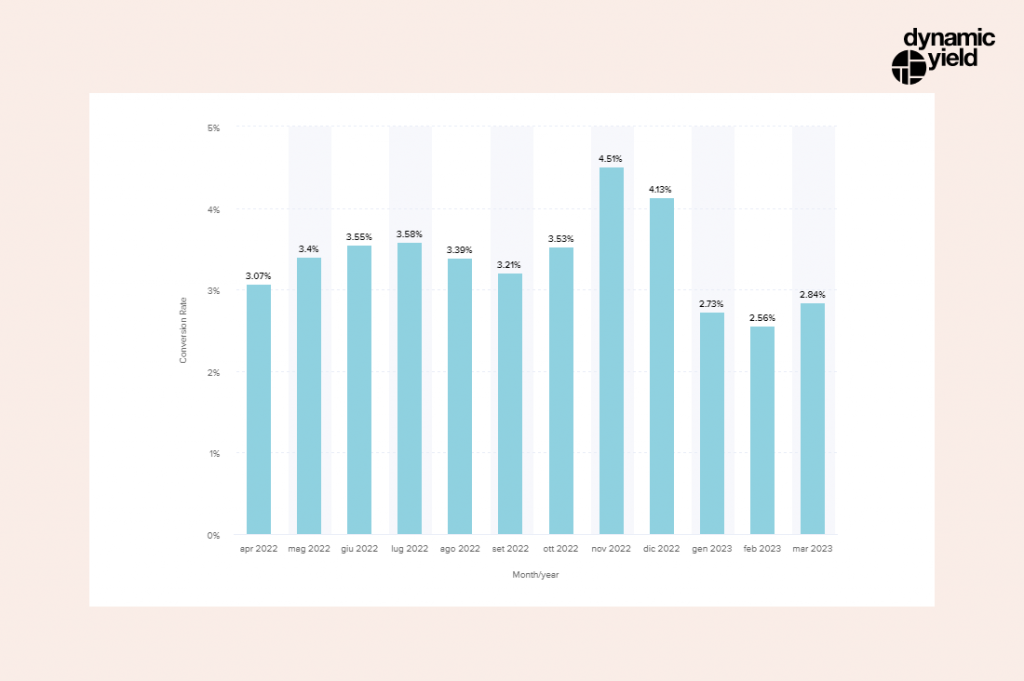
Average ecommerce conversion rate per Industry
If you are looking for a benchmark to measure the performance of your ecommerce, here are some good conversion rates according to the analysis by Dynamic Yeld:
- Home & Furniture – 1.61%
- Pet Care & Veterinary Services – 3.52%
- Beauty & Personal Care – 2.47%
- Fashion, Accessories, and Apparel – 3.2%
- Luxury & Jewelry – 1.69%
- Food & Beverage – 3.73%
- Consumer Goods – 3.36%
- Multi-Brand Retail – 4.99%
And more, here is an infographic from TIDIO’s study with the average conversion rate across industries in Q4, 2022:
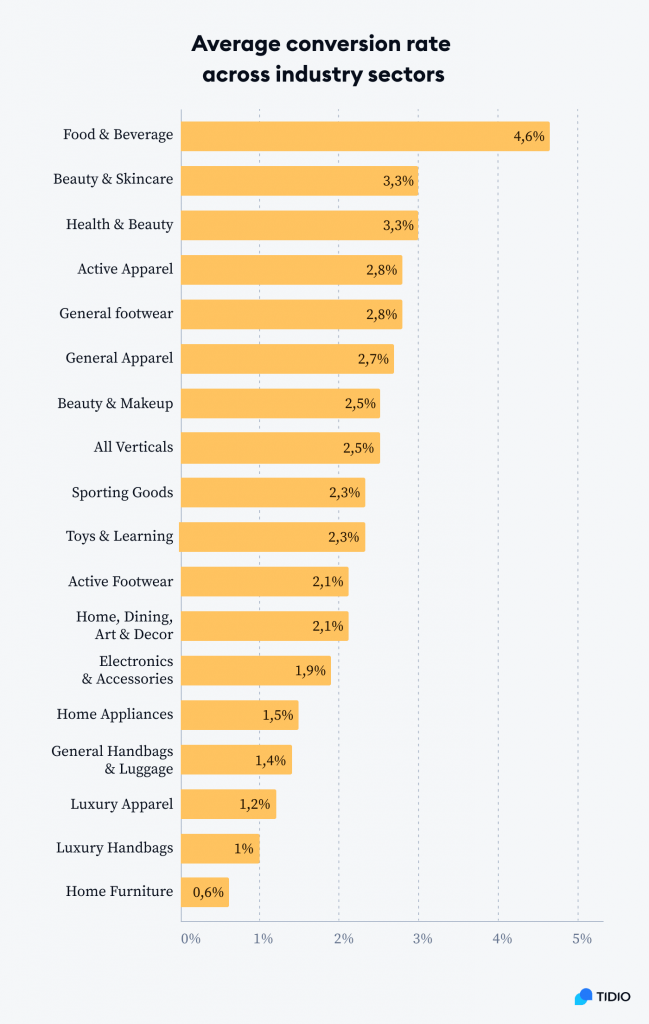
Additional metrics to measure e-commerce conversions
In addition to examining industry standards, several other key metrics should be tracked to gain a deeper insight into customer behaviour and preferences. These include:
- Bounce rate
The bounce rate shows how many people leave a website after looking at just one page. This is not good because it means that visitors are not staying long enough to find what they need. If the bounce rate is high, people are not finding what they want on that website and are leaving right away.
- Exit rate
Exit rate and bounce rate are similar. However, the exit rate reveals how many visitors leave your website after viewing a specific page, while the latter indicates those who depart from any page without engaging. A very high exit rate on one of your pages could suggest that it needs to be optimized to retain more visitors. By striving for a lower exit rate, you can aim to maximize engagement and ultimately drive conversions!
- Click-through rate (CTR)
Want to draw more people to your website and get them to take action? Focus on boosting your click-through rate! This metric reveals the number of individuals who followed a link from an ad or email, heading straight for your site. AdWords optimization and email marketing campaigns can be tailored around increasing click-throughs—and even social media engagement.
- Average session duration
When assessing user engagement, average session duration is a key metric to measure. A high bounce rate signals that your visitors are not engaging with your site for long enough periods of time and thus cannot be appropriately converted into customers.
- Cart abandon rates
Cart abandon rates measure the number of shoppers starting but not finishing their shopping journey. High cart abandonment can reveal a flaw in your shopping experience or indicate that shoppers are leaving to do further research before purchasing. Knowing your abandoned cart rate can help you identify potential areas for improvement and make the necessary changes to reduce abandonment.
By monitoring these additional factors, merchants can better understand why customers may be dropping off during checkout, allowing them to make changes that improve user experience — ultimately leading to increased conversions over time.

How to increase your ecommerce conversion rate
Now that you understand the mechanics behind measuring ecommerce success, here are 5 tips to use those metrics to increase your average ecommerce conversion rate:
- Optimize website speed and design
An optimized website should be fast and intuitive to navigate, or customers will leave for a better experience elsewhere. Making sure your website loads quickly and runs smoothly is essential, as is ensuring it’s organized so shoppers can access the products they want without too much hassle.
- Provide clear product descriptions and images
When running an ecommerce business, giving shoppers a clear idea of what they’re buying is essential to increase the average ecommerce conversion rate. Providing detailed product descriptions and quality images can help build trust and encourage customers to hit that purchase button confidently.
- Simplify the checkout process
Shoppers stuck on the checkout page are much more likely to leave. To reduce this, you should streamline and automate the checkout process as much as possible. This means eliminating additional steps that don’t need to be taken, such as asking customers to create an account before purchasing.
- Add more Social Proof
What better way than a satisfied customer review to increase your average ecommerce conversion rate? Consumers love to hear from other customers and are constantly seeking reassurance. A positive review can succeed where product descriptions or marketing campaigns fall short. Want to give it a try?
- Introduce product customization
Ecommerce stores that want increased conversion rates should look into product customization. It’s been proven that customers love the feeling of personalization. When they can express themselves and make a product their own, it brings a new level of comfort to the buying experience.
Allowing customers to design or customize products, choose colours and patterns for items, or add personal photos and text creates a sense of ownership and gratification. Product customization helps foster loyalty between customer and brand and can often lead to more referrals, more return customers, and more purchases – not just in quantity but also in quality!
Why choosing product customization to boost sales?
In the ecommerce universe, product customization plays a key role – giving customers a personalized experience by allowing them to pick from an array of colours, components, and other features when purchasing products.
Here are some of the benefits of using product customization in your ecommerce stores:
- Improved and more engaging CX
If customers can personalize their purchases, it can significantly enhance their experience. Give shoppers what they want; let them design something uniquely theirs! Even small gestures can make all the difference in fostering loyalty and satisfaction with your company’s products.
- Reduced returns and lead times
By allowing customers to customize their purchases, you can reduce return rates and lead times – as shoppers are less likely to want to send back items made just for them. This also means better customer satisfaction, which often translates into increased orders and sales.
- Boost in sales
Personalization in ecommerce offers many advantages, but one of the most remarkable is its immense potential for increasing sales volume and deepening average order values. Harnessing this benefit can provide your business with a transformative boost!
Providing customers with the ability to customize their purchases, such as engraving words on a ring, has been proven to increase sales exponentially and increase average ecommerce conversion rate. Research shows that most people are willing to pay more when they have customization options available during checkout. Offering this option can potentially double your business profits!
- Add more value to your products
The Ikea effect is a cognitive bias that states that customers place a higher value on things that they helped to build or create. By adding customization to your products, your customer becomes part of the journey, giving them more ownership and adding value to their purchase.
- Increased Customer Satisfaction
Last but not least, product customization is a great way to make customers feel valued and special. It helps foster an emotional connection between the customer and the brand and encourages them to return for future purchases.
Start customizing your products and increase your conversion rate
Product customization is quickly becoming an essential part of any successful ecommerce strategy. By allowing shoppers to tailor their products, retailers can create personalized items that meet their customers’ needs and preferences — ultimately driving higher conversion rates. Furthermore, product customization provides customers with a unique level of engagement that helps differentiate brands from competitors across the marketplace.
The first step in taking advantage of product personalization services is integrating a tool like Zakeke into your existing website or app store platform(s). This will enable you to offer sophisticated customizations without writing complex code or investing in additional software tools.
With this solution, you’ll be able to offer everything from t-shirts and mugs all the way up to furniture pieces created using 3D printing technology if necessary! Once integrated, your customers can customize their purchases according to their individual tastes, increasing customer loyalty and satisfaction over time and boosting your average conversion rate and sales significantly.

Zakeke Visual Customizer lets customers personalize any product (clothing, custom gifts, paper products, shoes, jewellery, watches, etc.) and visualize their appearance before checking out with 3D & AR. No more manual work – you’ll never have to prepare proofs again or hear back from angry customers complaining, “this isn’t what it’s supposed to look like.” Customers always know what they will get before buying, which means fewer refunds, fewer complaints, and more 5-star ratings.
Ready to start using a Product Customizer to boost your sales? Start now: try Zakeke for free for 14 days (you can install it yourself within your e-commerce) or request a demo to discover all its features.

